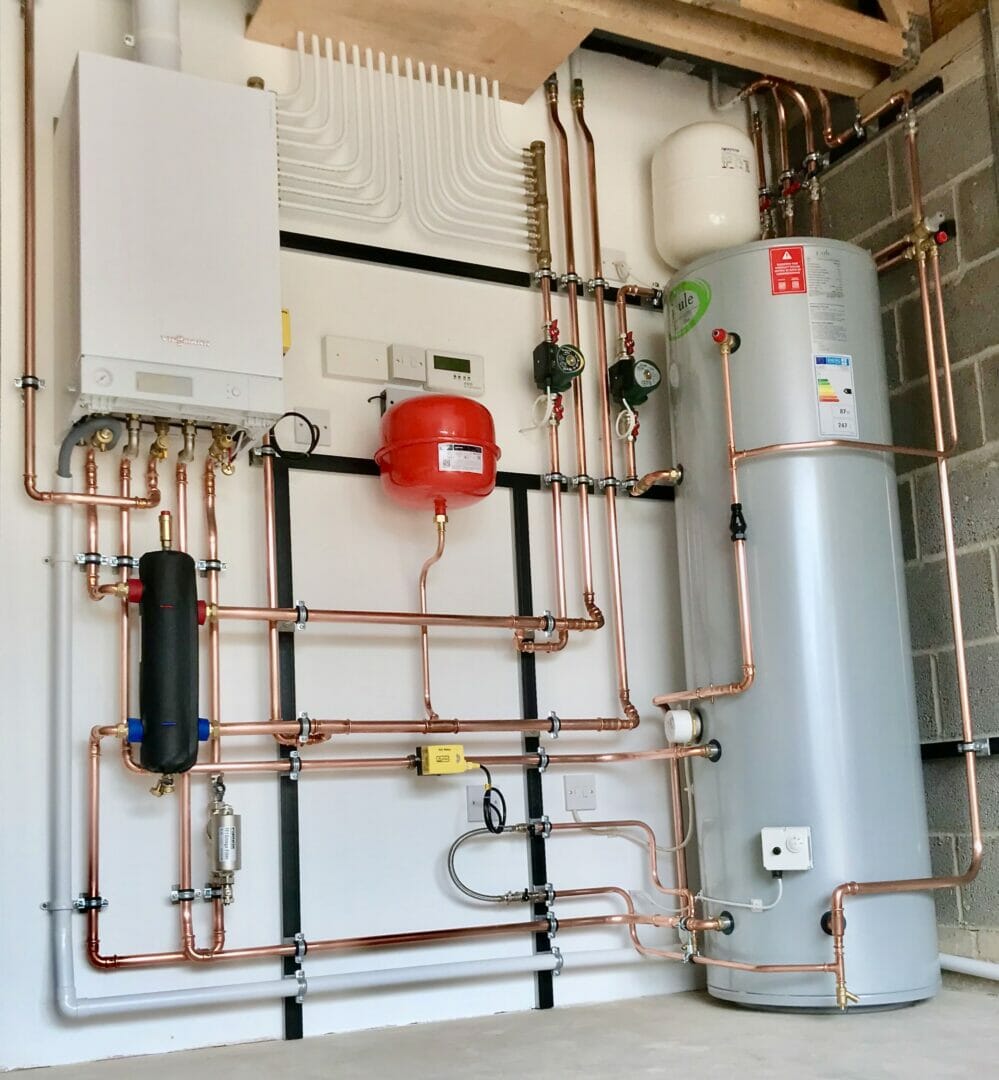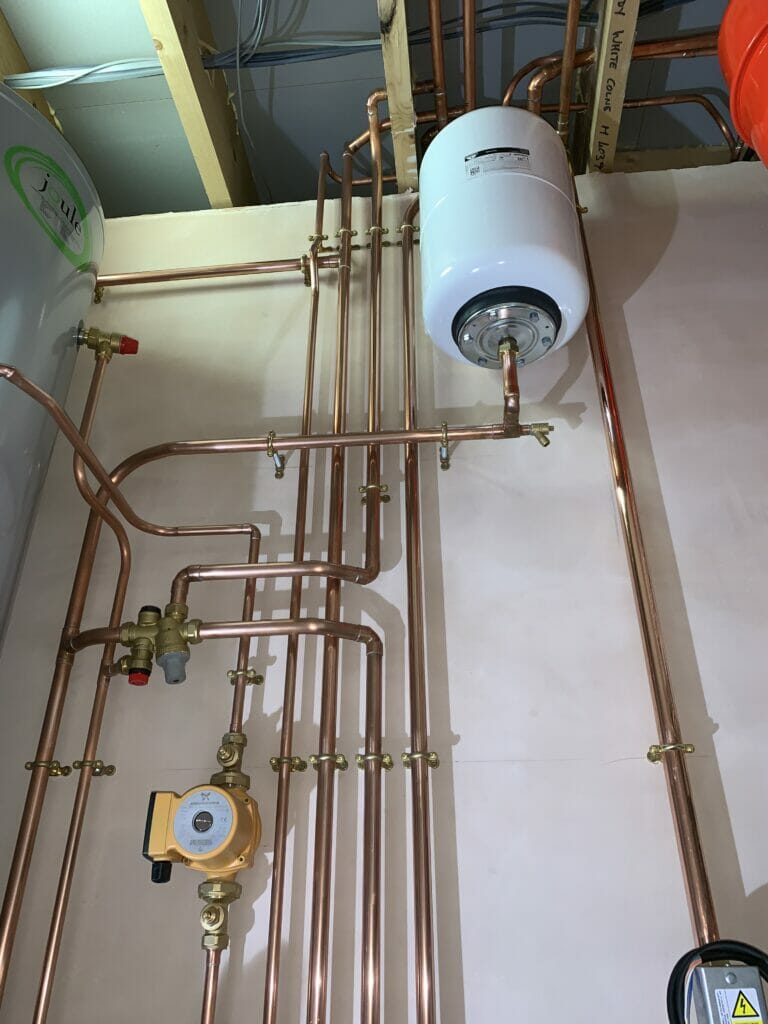
As we near the end of what has been a challenging year, navigating the new normal brought on by the Covid-19 pandemic, and finding our footing, 2022 will see greater normality as the industry learns to navigate these challenges and move forward.
With rapidly emerging technologies, products and changing industry attitudes, you can’t help but wonder what advances will be adopted throughout the industry as we move into the post-pandemic era of plumbing and construction.
However, the future isn’t all about technology and the digitisation of the industry – sustainability and green building practices are also increasingly gaining visibility as people are becoming more environmentally conscious.
Consumers now want green infrastructure in their homes, shopping centres, and office buildings. They want places with clean air and little-to-no carbon emissions. Homeowners don’t want the houses of the past which have poor energy efficiency ratings and are built with single use materials – they seek sustainable solutions that conserve natural resources and give back to the environment.
With sustainability in mind, what trends can we expect to emerge in plumbing and construction in 2022?
Growing popularity of heat pumps
As the technology and affordability of low-carbon heating systems is anticipated to improve in coming years, they will become the obvious, affordable choice for consumers.
Following the government’s recent heat pump grant announcement – which will see homeowners offered subsidies of £5,000 to make the switch from gas boilers to low-carbon heat pumps – we will see a heightened public awareness around sustainable heating and hot water provision in 2022.
The move towards heat pumps is a great way to lower CO2 emissions from the housing sector – currently responsible for c. 15% of UK overall greenhouse emissions – by swapping gas to capturing heat from the air outside or underground and using it to heat a building. Unlike more conventionally used heating systems, these pumps provide renewable heating that don’t emit carbon into the atmosphere.
What’s more, many heat pumps rely on copper pipes in order to improve efficiency and safety, meaning that less sustainable materials such as plastic pipes are likely to be phased out. For example, copper is a superior conductor of heat so can withstand large variations in temperature without expansion or contraction issues. Furthermore, copper is also a safer product to install within a house as its melting point is over 1,000 degrees Celsius so, unlike plastic, it doesn’t burn or give off harmful gases in a fire.
Flow rate and pressure drops must also be considered when considering which pipe to use in heat pumps. As well as having serious environmental problems, plastic pipes have a bore size which is considerably smaller than copper and a smaller internal area, which has a dramatic effect on flow characteristics. If installers select plastic pipe instead of copper without checking the size correctly, this could have a negative effect on the heat pump’s performance.
The use of copper pipes in heat pumps not only improves their efficiency, but also their water safety. As heat pumps operate at lower temperatures than gas boilers, stored water may only be heated to around 50 degrees Celsius. This is often fine for household use, but it can pose a risk of Legionella build-up. However, using copper pipe would mitigate this risk due to its natural anti-bacterial and anti-microbial properties. Additionally, thanks to its unique thermal properties, copper water systems can safely withstand thermal shocking at 70 degrees Celsius to effectively kill waterborne bacteria, such as legionella pneumophila.
A re-evaluation of construction materials
As the world becomes more environmentally conscious, it will also become increasingly more important to balance the need for new housing while ensuring the housing stock developed comes from materials which don’t compromise the lives of future generations.
To make sure the homes of the future meet our needs without depleting our natural resources or causing damage to the environment, the plumbing and construction industries will have no choice but to re-consider the materials they use.
Many plumbers and builders have turned to plastic over the years due to its affordability, and its popularity has also increased as a result of the plastics industry downplaying its environmental impact. But, while it’s true that plastic provides a cheaper alternative to metal, its recyclability has been greatly exaggerated and there are in fact a number of serious environmental problems to this solution.
Since its invention six decades ago, plastic use has grown exponentially and resulted in over 8.3 billion metric tons of various plastics. As reported by the Resource Efficiency Collective, in the region of eight million tons of plastic waste enters the sea every year, which is more than twice the annual consumption of plastics in the UK. Furthermore, according to National Geographic, 91% of all plastics produced in the world have not been recycled.
Concerningly, the plumbing and construction industries play a big part in this. According to the Department of Environment Food & Rural Affairs (DEFRA), construction, demolition and excavation generated around three fifths (62%) of total UK waste in 2018 and, with many contractors opting to use non-recyclable plastic, the majority of this waste ends up being incinerated, landfilled, or exported. It is clear that plastics do not form part of a natural environmental lifecycle.
To ensure we create homes fit for the future, we must consider how we can eliminate single use plastics behind our walls and under our floors and replace them with infinitely recyclable or biodegradable alternatives.
Increased focus on recyclability
In order to create a future that isn’t reliant on finite resources, we need to move away from plastic and look at recyclable materials which can offer far more for the environment and the people it serves, without limiting the progress of innovation.
Copper, for example, has the unique ability to be recycled over and over again without any loss in performance or properties. The US Geological Survey recently conducted research into the world’s copper resources and discovered there are approximately 5.6 billion metric tons in circulation – a figure more than sufficient to surpass both current and future demand.
What’s more, around half of Europe’s copper demand and 30% of global demand is currently being met by recycled materials and, as recycling technologies improve, this figure will only continue to increase. Old copper is simply recovered, melted, and cast into new products, rather than ending up in landfill or in the sea like materials such as plastic do.
Copper is ready for a future where people need to get more from fewer, more ethically and sustainably sourced materials, making our homes and way of living more environmentally friendly. It is a material that supports the environment and, born from nature, it will help support more sustainable living.
Sustainability should be high on the agenda of anyone working in the construction industry. So, as us construction professionals look to the year ahead and think about how we can improve the sustainability not only of our businesses, but also the industry as a whole, we should perhaps make it our mission to make the shift to more environmentally friendly, recyclable materials, such as copper.
Will you be making this commitment in 2022?



